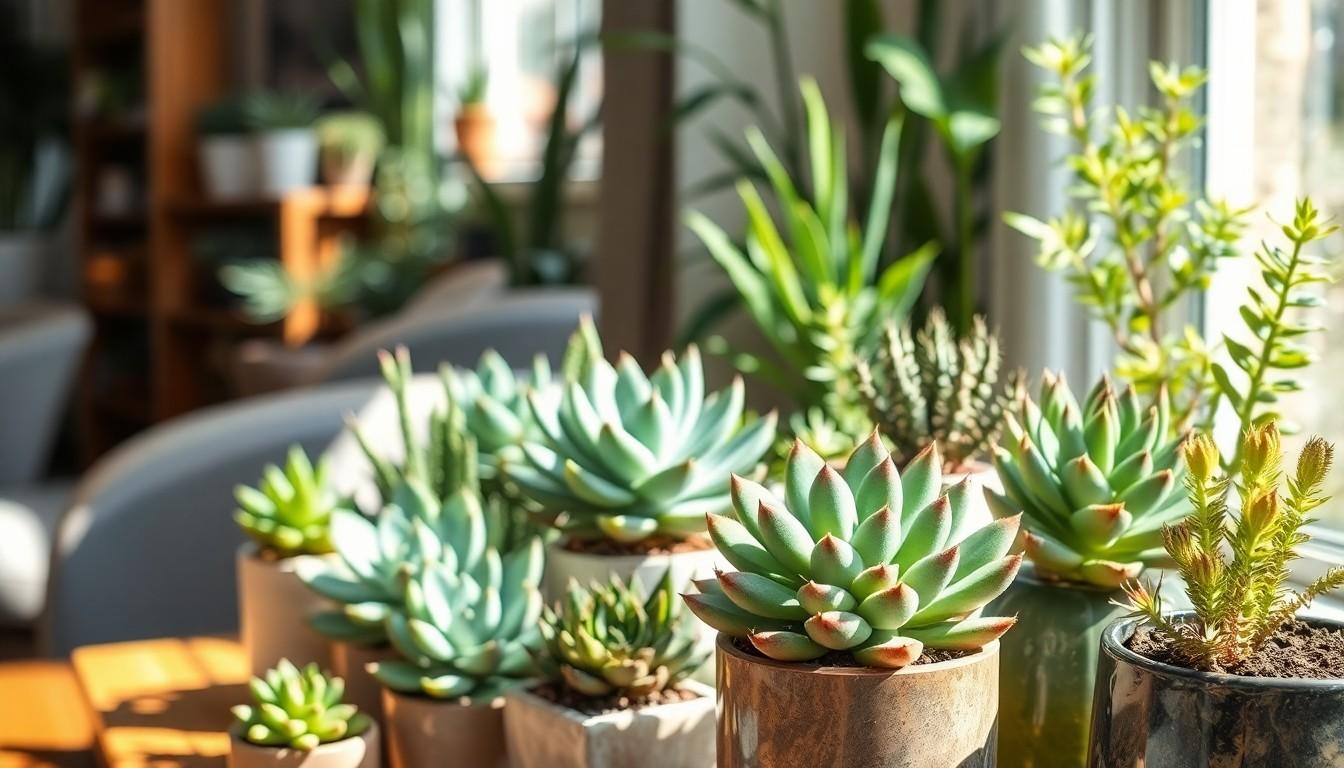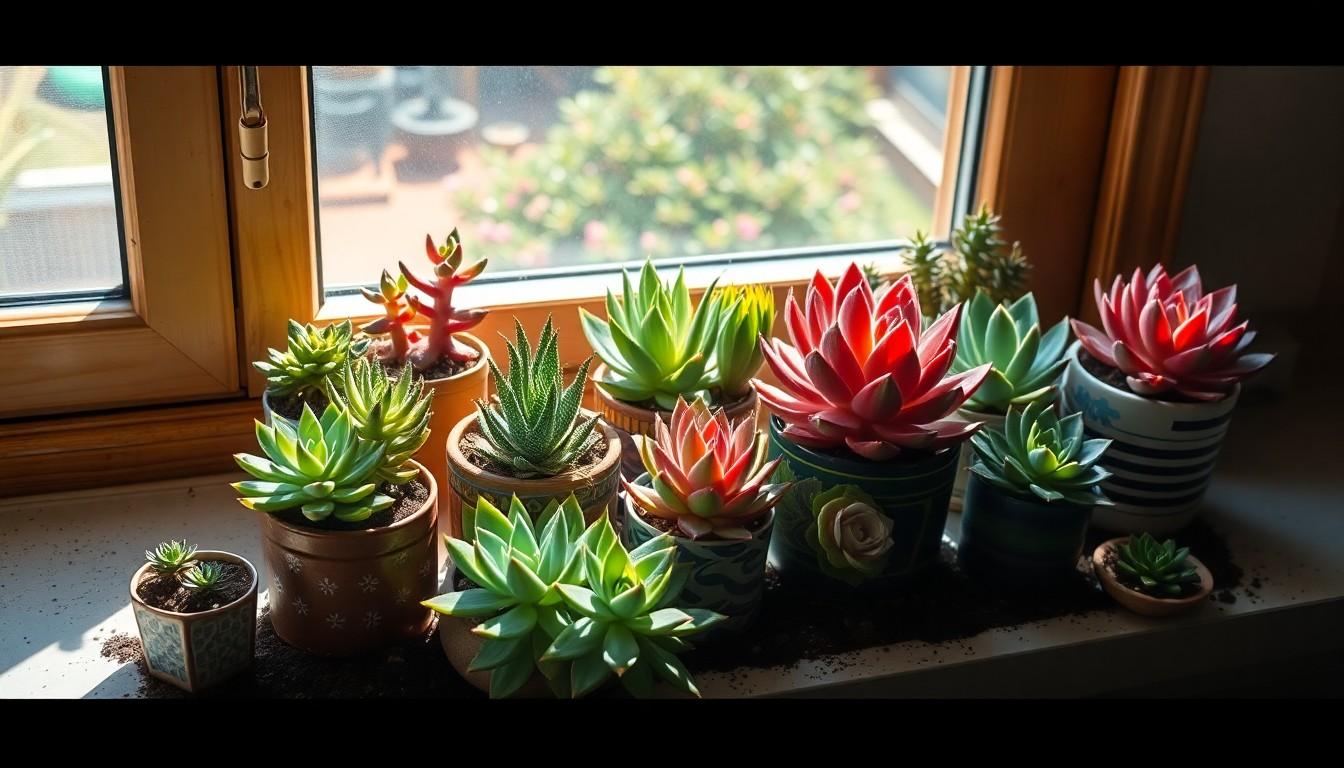Phone:
(701)814-6992
Physical address:
6296 Donnelly Plaza
Ratkeville, Bahamas.

Succulents are the ultimate plant divas, thriving in some of the most unexpected places. These charming green companions have a knack for turning ordinary spaces into vibrant oases. But where exactly do they call home? From sun-soaked deserts to cozy windowsills, succulents have a flair for finding the perfect spot to strut their stuff.
Succulents thrive in various natural environments, primarily characterized by dry conditions. Their unique adaptations enable resilience and growth in challenging climates.
Arid regions host most succulents, where temperatures can soar during the day and drop significantly at night. These environments include deserts such as the Sonoran, Atacama, and Namib. Limited rainfall leads succulents to store water in their leaves, stems, and roots. Thick, fleshy tissues allow them to utilize scarce resources efficiently. Examples like cacti and agaves show remarkable endurance against extreme heat and drought.
Succulents exhibit a widespread geographic distribution. They primarily flourish in regions with dry climates, especially in Africa, the Americas, and parts of Asia. In Africa, the vast deserts host iconic species like Euphorbia. North America supports diverse varieties, from the southwestern deserts to high mountain ranges. Each habitat plays a critical role in determining the characteristics of succulents, influencing size, shape, and color adaptations.

Succulents thrive best in specific environments that mimic their native habitats. Understanding their ideal growing conditions enhances their health and appearance.
Well-draining soil remains essential for succulent growth. A mix of potting soil, sand, and perlite or pumice fosters optimal drainage. Each component contributes to moisture retention while preventing root rot. Excessively compacted or soggy soils inhibit root development, leading to plant decline. Maintaining a slightly acidic to neutral pH between 6.0 and 7.0 supports nutrient availability. Regularly checking soil drainage ensures it meets these criteria.
Bright, indirect sunlight benefits succulents significantly. Many species prefer at least 6 hours of light daily, enhancing their vibrant colors and shapes. Placing them near windows or in well-lit areas caters to their sunlight preferences. Direct afternoon sun can scorch their leaves, so filtered light proves more effective during peak hours. Rotating plants occasionally encourages even growth on all sides. Monitoring light intensity is crucial to thriving succulents in any space.
Succulents adapt well to both indoor and outdoor environments, thriving under various conditions. Indoor conditions present unique advantages.
Succulents perform exceptionally well in indoor settings. Adequate light and proper care promote their growth. Placing them near south or west-facing windows maximizes sun exposure. These plants prefer bright, indirect light, making them suitable for living rooms, kitchens, or home offices. Indoor humidity levels often suit their needs, and with well-draining potting mix, root rot becomes less of a concern. Regular watering, every two to three weeks, helps prevent over-saturation. Observing their growth can provide insight into adjusting care if needed.
Outdoor growth offers succulents ample sunlight and space to thrive. Placing them in gardens requires selecting well-draining soil to support their root systems. Full sun exposure is ideal, promoting vibrant colors and robust growth. Outdoor conditions also allow for natural rainfall to hydrate succulents, reducing the frequency of manual watering. During extreme weather, shade can protect them from harsh conditions. Soil composition and drainage are vital to prevent root problems. These plants enhance outdoor landscapes, creating beautiful focal points in gardens or patios.
Succulents come in a variety of types, each with unique characteristics suited for different environments.
Echeveria stands out for its rosette shape and vibrant colors, making it a favorite among enthusiasts. Agave, with its striking leaves and architectural form, also captivates many gardeners. Aloe vera provides both beauty and health benefits, as its gel is often used for skin care. Jade plant, known for its resilience, symbolizes good luck in many cultures. Lastly, Haworthia features small, windowed leaves that add a touch of charm to indoor spaces.
Africa hosts many fascinating succulents, such as the Welwitschia mirabilis, which thrives in extreme conditions. The Americas offer the iconic Saguaro cactus, renowned for its towering presence in deserts. In the Andes, Copiapoa species showcase unique adaptations to harsh climates. Asia introduces the beautiful Lithops, also called living stones, known for their remarkable mimicry of pebbles. Each region contributes unique varieties that exhibit distinctive traits and adaptations, enhancing their global appeal.
Succulents thrive with proper care, particularly in their watering practices and temperature preferences.
Watering requires a delicate balance. Excess moisture can lead to root rot, so it’s essential to allow the soil to dry out between watering. Generally, watering every two to three weeks suffices, but this can change based on humidity levels. During the growing season, which typically spans spring to summer, increased water frequency may enhance growth. Using well-draining soil helps prevent oversaturation and encourages healthy root systems. Observing the leaves provides clues; if they appear wrinkled, it often signals thirst, while mushy leaves suggest overwatering.
Temperature plays a significant role in succulent health. Most succulents prefer temperatures between 60 and 80 degrees Fahrenheit. They adapt well to both indoor and outdoor environments, though extreme temperature fluctuations can stress them. During winter, many succulents benefit from cooler conditions, ideally around 50 degrees Fahrenheit. Avoiding frost is critical, especially for outdoor varieties. A stable environment enriches their resilience and overall growth, contributing to vibrant colors and robust structures.
Succulents are remarkable plants that can flourish in a variety of environments. Their adaptability makes them perfect for both indoor and outdoor settings. By understanding their natural habitats and ideal growing conditions, anyone can successfully cultivate these vibrant plants.
With the right balance of light, soil, and watering practices, succulents can thrive and bring beauty to any space. Whether it’s a sunny windowsill or a garden bed, these resilient plants offer unique charm and character. Embracing their diverse varieties and care requirements allows for a rewarding gardening experience.